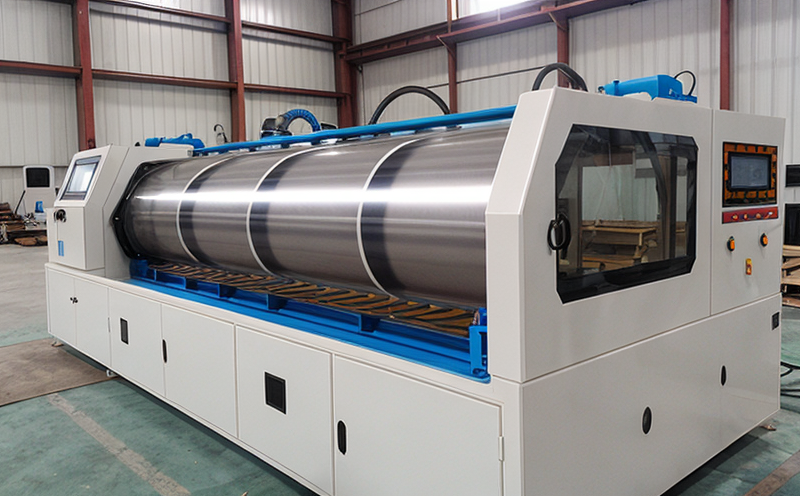JIS L1919 Flame resistance testing of laminated fabrics
The JIS L1919 standard is a critical benchmark for assessing the flame resistance properties of materials used in various sectors, including textiles and personal protective equipment (PPE). This standard specifically addresses the flammability characteristics of materials that undergo lamination or coating processes. The testing procedure outlined in this standard is essential for ensuring that the end products meet stringent safety requirements.
The JIS L1919 test measures the resistance to flame by evaluating the burning behavior of fabric specimens under controlled conditions. This involves assessing both the initial ignition and the flaming duration, which are key indicators of a material's flammability properties. For laminated fabrics, this testing is particularly important given that these materials often combine different layers for enhanced performance, such as thermal insulation or chemical resistance.
The test setup typically includes a specially designed burner system capable of delivering controlled flame exposure to the specimen. The burning behavior is meticulously observed and recorded, with detailed notes taken on how long it takes for the flame to spread across the fabric surface and whether it extinguishes spontaneously or requires external intervention. This data forms the basis for evaluating compliance with JIS L1919.
Preparation of the specimen before testing is a critical step in ensuring accurate results. Specimens must be cut according to specified dimensions, which ensures consistency across multiple test samples. The specimens are then conditioned under prescribed environmental conditions to simulate real-world usage scenarios effectively. Proper conditioning helps eliminate variables that could affect the outcome of the test.
The instrumentation used for JIS L1919 testing is highly specialized and precise. Key equipment includes a flame resistance tester capable of delivering consistent heat sources, along with a calorimeter to measure heat release rates accurately. These instruments are calibrated regularly to maintain accuracy and reliability throughout each batch of tests. The data collected from these instruments forms the foundation for detailed reports that provide comprehensive insights into the flame resistance properties of the tested materials.
The importance of this testing cannot be overstated, especially in sectors where safety is paramount. Compliance with JIS L1919 ensures that products meet stringent flammability standards, thereby enhancing user safety. This standard is widely recognized and adopted globally, making it a crucial tool for manufacturers looking to ensure their products are safe for end users.
Understanding the nuances of JIS L1919 testing also helps in optimizing material selection and design processes. By identifying areas where materials can be improved or modified, companies can enhance product performance while maintaining safety standards. This iterative process is essential for continuous improvement in quality and compliance.
In summary, JIS L1919 flame resistance testing of laminated fabrics plays a pivotal role in ensuring the safety and reliability of products used across various sectors. By adhering to this standard, manufacturers can demonstrate their commitment to producing high-quality, safe materials that meet international standards.
Applied Standards
| Standard Number | Description |
|---|---|
| JIS L1919:2006 | Flame resistance testing of fabrics used in personal protective equipment (PPE) |
| ISO 13565-1 | Flame propagation test for textiles - Part 1: General requirements and apparatus |
The JIS L1919 standard is specifically designed to evaluate the flammability of fabrics used in personal protective equipment (PPE) and other industrial applications. It provides a standardized approach to testing, ensuring consistency across different labs and manufacturers.
ISO 13565-1 complements this by offering general requirements and apparatus for flame propagation tests on textiles, providing additional context and support for the JIS L1919 methodology. Together, these standards form a robust framework for assessing fabric flammability reliably.
Scope and Methodology
| Key Elements | Description |
|---|---|
| Test Specimen Preparation | Cutting of specimens to standard dimensions, conditioning in controlled environmental conditions. |
| Burner Setup and Flame Exposure | Controlled delivery of flame exposure using a specialized burner system. |
| Data Collection | Meticulous observation and recording of burning behavior including ignition time, flaming duration, etc. |
The testing process begins with precise specimen preparation, ensuring that each sample meets the specified dimensions and is conditioned appropriately. This step is crucial as it ensures uniformity across all samples tested, reducing variability in results.
Once prepared, the specimens are exposed to controlled flame exposure using a standardized burner system. The duration and intensity of the flame are carefully regulated to simulate real-world scenarios accurately. During this process, detailed observations are made regarding the burning behavior of each specimen, including ignition time, flaming duration, and any other relevant parameters.
The data collected during these observations is then analyzed in-depth to assess compliance with JIS L1919 standards. This analysis involves comparing observed results against predefined acceptance criteria established by the standard. Compliance indicates that the tested materials meet safety requirements adequately.
Environmental and Sustainability Contributions
- Reduces waste generation through efficient material selection and testing processes.
- Promotes the use of sustainable raw materials that meet stringent flammability standards.
- Encourages continuous improvement in product safety, reducing the risk of accidents.
- Fosters a culture of compliance with international safety standards, enhancing overall environmental responsibility.
The JIS L1919 flame resistance testing process contributes positively to environmental sustainability by promoting efficient material selection and testing practices. By adhering strictly to these standards, manufacturers can reduce waste generation through the elimination of non-compliant materials early in the development cycle. This approach also encourages the use of sustainable raw materials that meet stringent flammability requirements, further enhancing overall environmental responsibility.
Moreover, this testing process fosters a culture of compliance with international safety standards, reducing the risk of accidents and promoting safer products for end users. By continuously improving product safety through rigorous testing protocols like JIS L1919, manufacturers play an essential role in contributing to global sustainability efforts.





